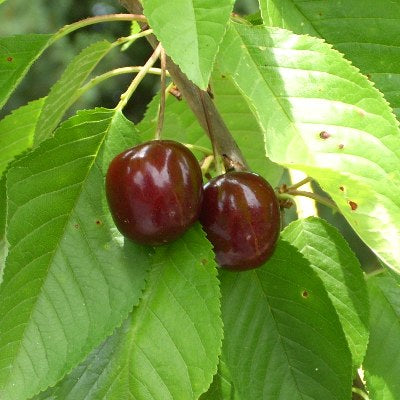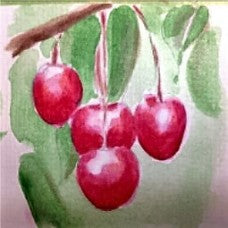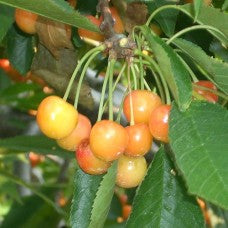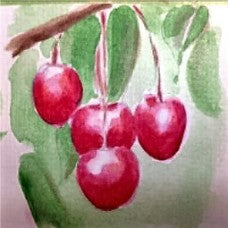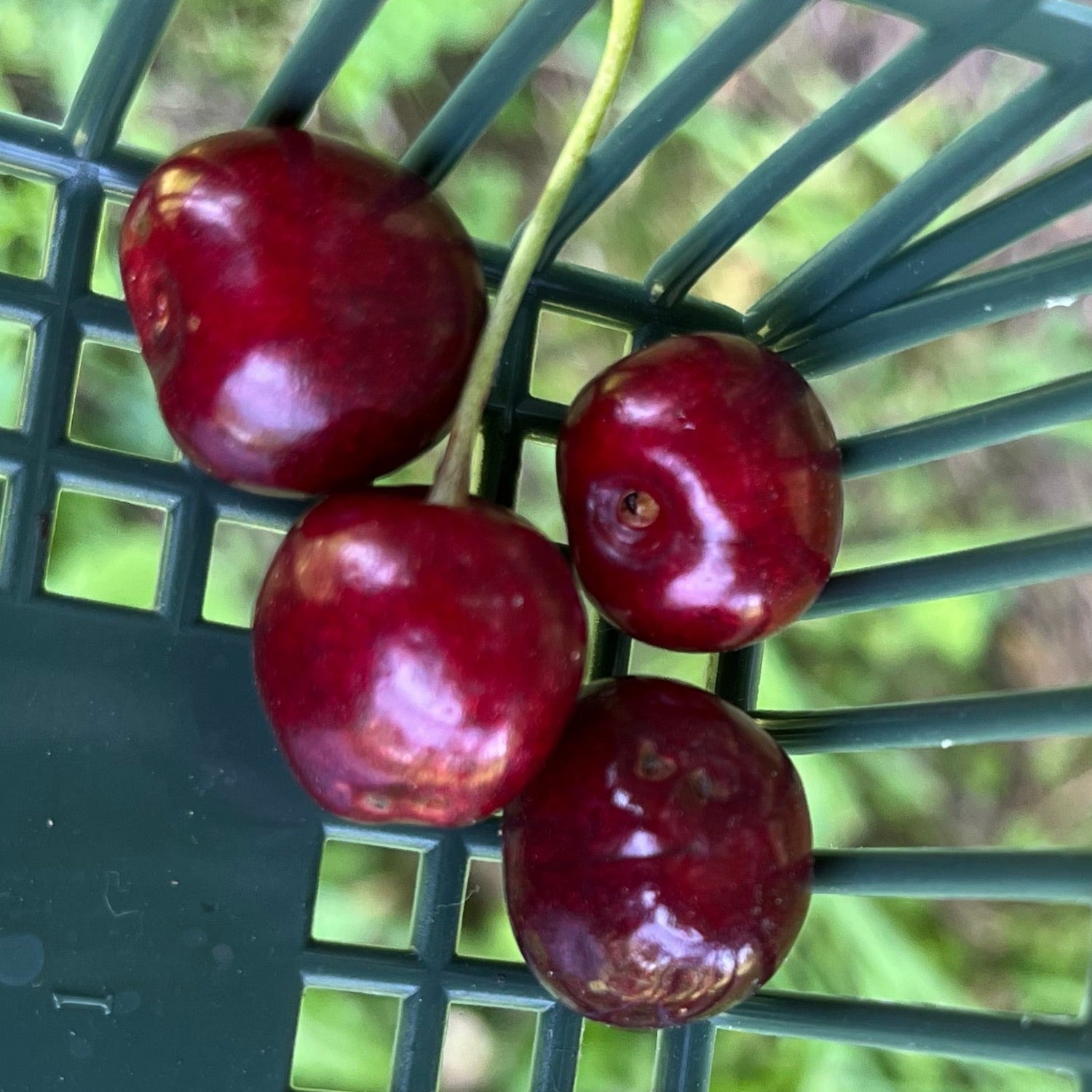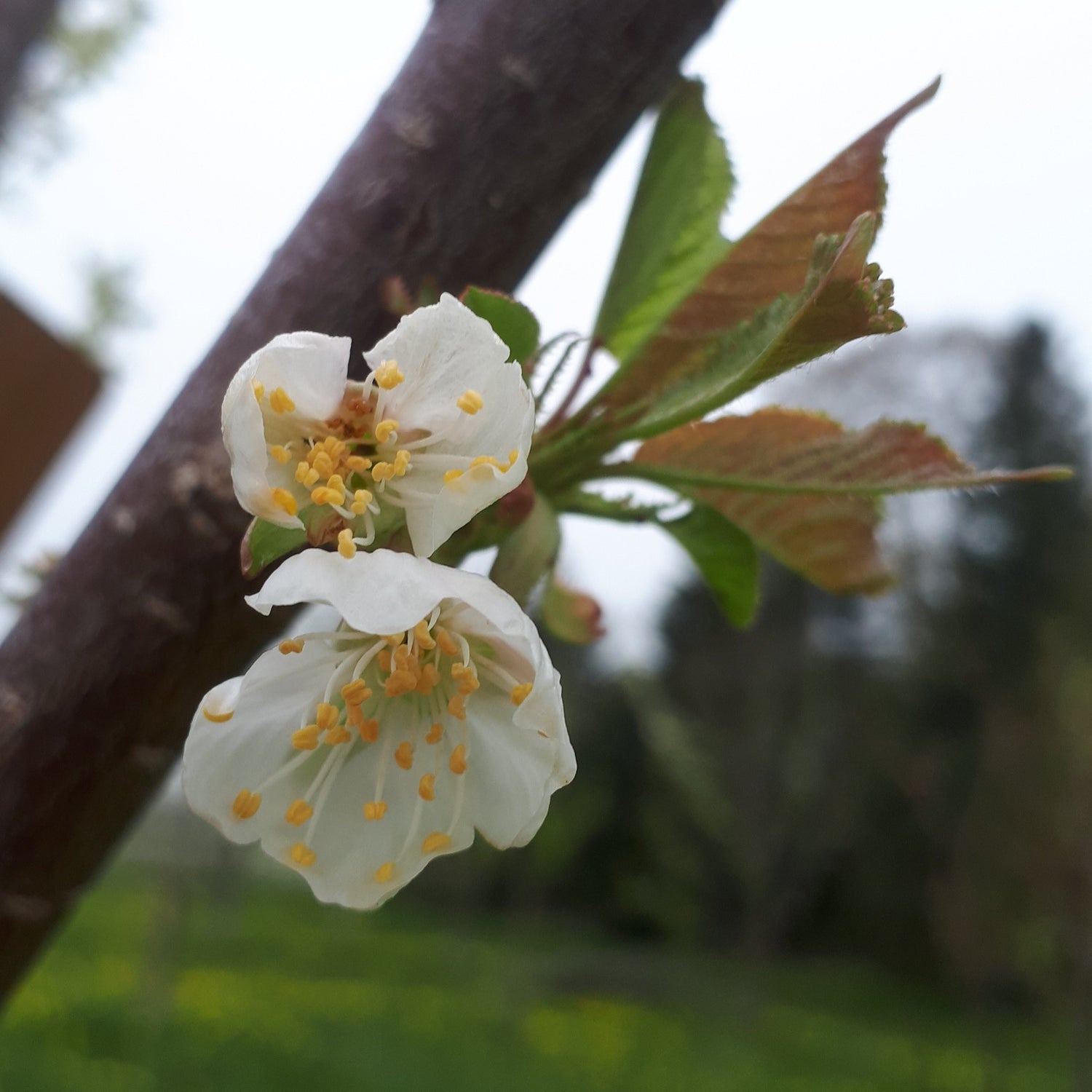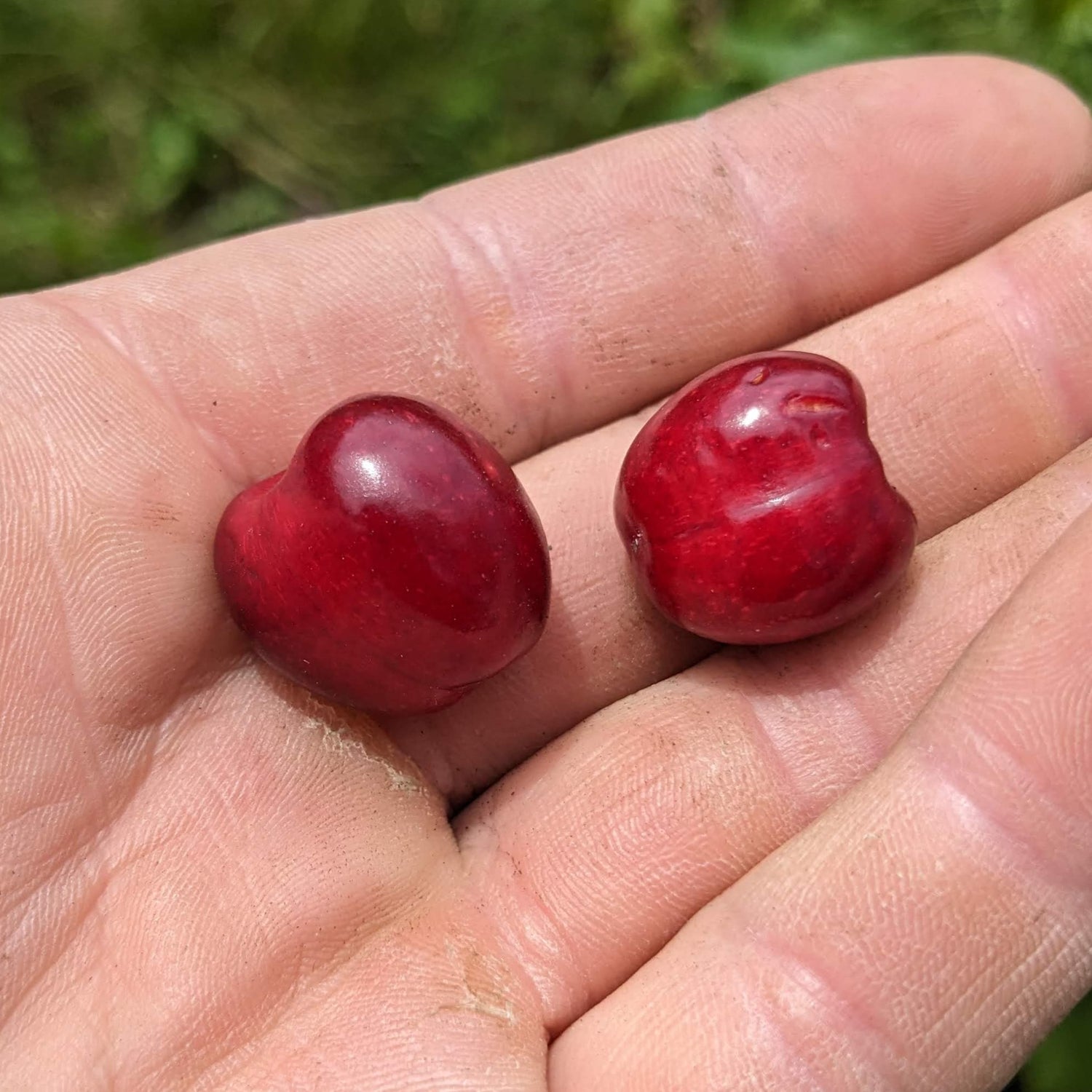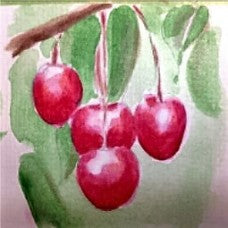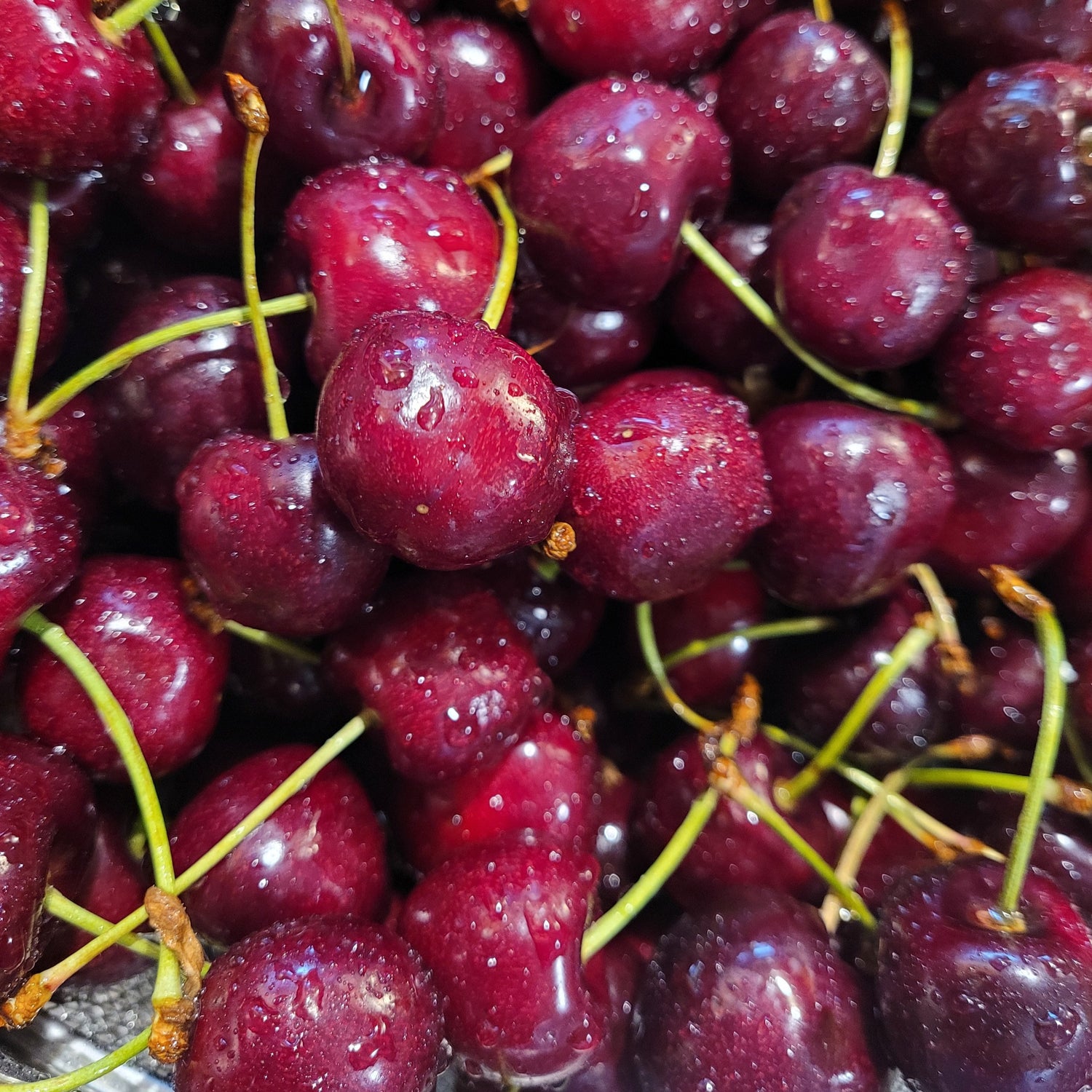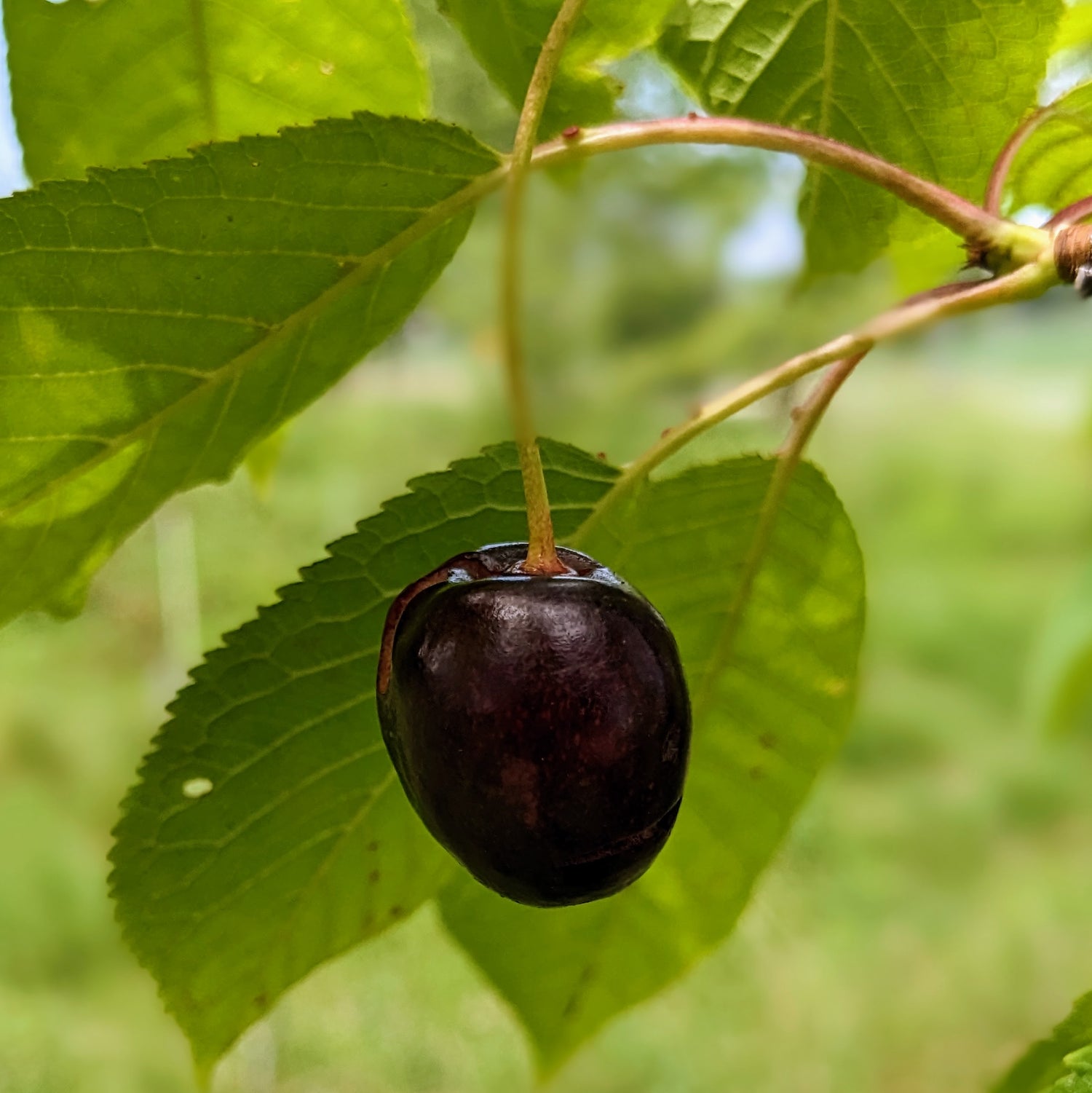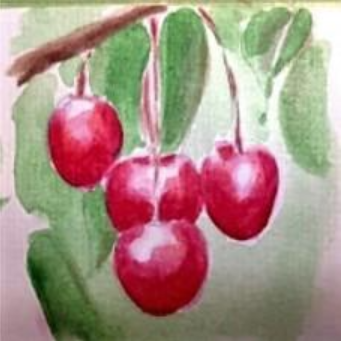Sweet Cherry Trees
Prunus avium
Sweet cherries provide lovely sweet treats that are best enjoyed right off the tree! These tall trees are also quite attractive in spring when covered in a profusion of lovely white flowers.
Some sweet cherries are self-pollinating and some need two different varieties for pollination - we have noted which is which in the variety descriptions. Otherwise, two different varieties are required. Sweet cherries and sour cherries do not pollinate each other.
Sort by:
18 products
18 products
Note regarding size: We received extra large trees from our supplier this year so we've created a new grade size called 2m+ branched. The trees may be pruned to slightly below 2m to fit into boxes at shipping.
History: Stella sweet cherries were developed by the Summerland Research and Development Centre in British Columbia in 1956 by K.O. Lapins, after whom Lapins cherries are named. These cherries were named and released in 1968, becoming the first named variety of self-pollinating sweet cherries. They have since become very popular, especially in the UK, and have been awarded the Royal Horticultural Society's Award of Garden Merit.
Why We Grow It: The Royal Horticultural Society was right to commend Stella. These large cherries have skin that is shiny yet extremely dark red, creating a feast for the eyes as well as the mouth! The flesh is medium firm and has a lovely sweet flavour, great for fresh eating as well as canning. Stella is self-pollinating and makes an excellent pollinator for other varieties.
Note regarding size: We received extra large trees from our supplier this year so we've created a new grade size called 2m+ branched. The trees may be pruned to slightly below 2m to fit into boxes at shipping.
History: Rainier sweet cherries were created by Harold Fogle at the Washington State University research center in 1952 and released in 1960. They were named after Mount Rainier, the tallest mountain in the state. Due to their delicate nature, Rainier cherries tend to be a bit more expensive than other commercial varieties.
Why We Grow It: Rainier are delicious yellow-skinned, yellow-fleshed sweet cherries. Some say they are the best tasting of all yellow cherries, and perhaps the best tasting cherry in general. Along with being great for fresh eating, they are also suitable for uses such as canning.
History: Compact Stella was developed at the Brookhaven National Laboratory in New York where dormant Stella scions underwent X-ray irradiation in 1964. This caused a mutation to occur, creating a cherry tree that was smaller in stature when fully grown than regular Stella cherry trees. In 1973 this smaller version of Stella was given the name Compact Stella.
Why We Grow It: Compact Stella sweet cherry trees bear very dark red heart-shaped fruit that is of high quality for fresh eating, and equally well-suited for canning, drying, or freezing. This compact version of the popular Stella sweet cherry is great for anyone with limited space. The typical mature height is 8-10 feet (2.5-3.0m), though they can reach up to 12 feet in optimal growing conditions.
History: Viva originated in 1935 as a possible hybrid of Hedelfingen and Victor.
Why We Grow It: Viva produces medium-sized, dark red cherries with good flavour. They are suitable for many uses including fresh eating, cooking, and preserving. They are one of the first cherry varieties to ripen, creating a pleasant start to the cherry season.
History: Bing sweet cherries originated near Salem, Oregon in 1875 as a cross between Black Republican and another sweet cherry variety. It was named after Ah Bing who worked as a nursery foreman for Seth Lewelling, the person who made Bing cherries into the top variety in the US. It is uncertain if Ah Bing himself developed the variety or if Lewelling simply named it after him as thanks for the 35 years he worked for him.
Why We Grow It: There are many reasons why this classic black sweet cherry has become the most commonly grown cherry in the US and the standard by which all other sweet cherries are measured. It produces large heart-shaped fruit with meaty purple-red flesh that is juicy and sweet. It has a semi-cling stone that is easy to remove, making it great for fresh eating and preserves. The tree is a heavy cropper, producing bountiful amounts of these lovely sweet cherries.
History: Hedelfingen cherries were discovered in Germany around 1850. The variety was named for Hedelfingen, the area where it was found. They were introduced to England in 1907 and are still grown commonly in Europe and North America.
Why We Grow It: This is an excellent quality sweet cherry that is very popular in Ontario. The fruit is dark red in colour with faint speckles, softer flesh, a pleasant juiciness, and a great taste. The trees begin to bear at a young age, the fruit is resistant to cracking, and the blossoms are tolerant of frost.
A recommendation from one of our wonderful customers: Save the pits! Chef Sam advises infusing sweet cherry pits in whiskey for an alluring, aromatic, almond flavoured drink!
History: Lapins (aka Cherokee) was developed at the Summerland Research Station in British Columbia by Latvian agronomist Karlis Lapins, an important figure in the development of self-pollinating sweet cherry varieties. He created Lapins by crossing Stella and Van sweet cherries, and although the variety was released in 1983 after he retired, it was named in his honour. The variety was also awarded the Royal Horticultural Society's Award of Garden Merit. Although quite popular when it was first released, Lapins have since been supplanted by other cherry varieties due to their popularity and its inconsistent quality when shipped.
Why We Grow It: These lovely deep purple cherries are quite similar to Bing. They have a pleasant, mild flavour and can be used for fresh eating, cooking, and canning. The fruit is resistant to cracking and the tree grows well and begins bearing fruit a little earlier than other varieties.
History: This heirloom sweet cherry originates from Arkona, Ontario where it was developed and grown by Ed Richter.
Why We Grow It: As an Ontario bred and raised sweet cherry, Richter cherries are well-suited to growing in our local conditions. We were fortunate to acquire this variety just before the removal of some very old Richter trees.
History: Skeena was developed at the Summerland Research and Development Centre in British Columbia in 1976 as part of an initiative to create a high quality cherry that ripens later in the season than other varieties. It is a cross between several self-pollinating varieties and was introduced in 2000.
Why We Grow It: These dark red cherries are often considered an improvement over Lapins with their larger size, good firmness, and general ease of harvest due to the spreading way the tree grows. The flavour is sweet with a touch of acidity. The tree itself grows vigorously and tends to start bearing fruit at a young age.
Available only for pick-up at nursery.
History: Hedelfingen cherries were discovered in Germany around 1850. The variety was named for Hedelfingen, the area where it was found. They were introduced to England in 1907 and are still grown commonly in Europe and North America.
Why We Grow It: This is an excellent quality sweet cherry that is very popular in Ontario. The fruit is dark red in colour with faint speckles, softer flesh, a pleasant juiciness, and a great taste. The trees begin to bear at a young age, the fruit is resistant to cracking, and the blossoms are tolerant of frost.
A recommendation from one of our wonderful customers: Save the pits! Chef Sam advises infusing sweet cherry pits in whiskey for an alluring, aromatic, almond flavoured drink!
Available only for pick-up at nursery.
History: Stella sweet cherries were developed by the Summerland Research and Development Centre in British Columbia in 1956 by K.O. Lapins, after whom Lapins cherries are named. These cherries were named and released in 1968, becoming the first named variety of self-pollinating sweet cherries. They have since become very popular, especially in the UK, and have been awarded the Royal Horticultural Society's Award of Garden Merit.
Why We Grow It: The Royal Horticultural Society was right to commend Stella. These large cherries have skin that is shiny yet extremely dark red, creating a feast for the eyes as well as the mouth! The flesh is medium firm and has a lovely sweet flavour, great for fresh eating as well as canning. Stella is self-pollinating and makes an excellent pollinator for other varieties.
Available only for pick-up at nursery.
Species: Prunus avium
History: These seedlings are grown from seeds from sweet cherries sourced in Ontario.
Why We Grow It: These seedlings will likely stay more true to type than apples which means you'll be enjoying some lovely sweet cherries in a few years' time! Alternatively, if you prefer growing named varieties, these seedlings would also be great wildlife trees or can be planted to attract birds and squirrels away from other fruit trees.
We have the following seedlings available:
- Niagara Sweet Dark Cherry
- These seedlings are grown from deep purple sweet cherries from Palatine in the Niagara region.
- Lapins Sweet Cherry Seedling
-
These are seedlings of Lapins and will likely bear some resemblance to their parent variety. Lapins was released in the 1980s from the Summerland Research Station in British Columbia and was initially quite popular. It is similar to Bing with a pleasant, mild flavour.
Available only for pick-up at nursery.
History: Bing sweet cherries originated near Salem, Oregon in 1875 as a cross between Black Republican and another sweet cherry variety. It was named after Ah Bing who worked as a nursery foreman for Seth Lewelling, the person who made Bing cherries into the top variety in the US. It is uncertain if Ah Bing himself developed the variety or if Lewelling simply named it after him as thanks for the 35 years he worked for him.
Why We Grow It: There are many reasons why this classic black sweet cherry has become the most commonly grown cherry in the US and the standard by which all other sweet cherries are measured. It produces large heart-shaped fruit with meaty purple-red flesh that is juicy and sweet. It has a semi-cling stone that is easy to remove, making it great for fresh eating and preserves. The tree is a heavy cropper, producing bountiful amounts of these lovely sweet cherries.
Available only for pick-up at nursery.
History: Rainier sweet cherries were created by Harold Fogle at the Washington State University research center in 1952 and released in 1960. They were named after Mount Rainier, the tallest mountain in the state. Due to their delicate nature, Rainier cherries tend to be a bit more expensive than other commercial varieties.
Why We Grow It: Rainier are delicious yellow-skinned, yellow-fleshed sweet cherries. Some say they are the best tasting of all yellow cherries, and perhaps the best tasting cherry in general. Along with being great for fresh eating, they are also suitable for uses such as canning.
Available only for pick-up at nursery.
History: Van was developed at the Summerland Research Station in BC and was the first variety released by their breeding program. It originated as an open-pollinated cross with Empress Eugenie in 1936 and was introduced in 1944. Van was named after J.R. Van Haarlem, a pomologist at the Horticultural Experiment Station in Vineland, ON. The variety initially enjoyed great popularity, but has faded out of commercial favour since it is not self-pollinating. It can still be found being grown on a small scale and in backyards.
Why We Grow It: Van produces firm, dark red cherries with an excellent flavour similar to Bing. They have a sweet/tart flavour that makes them great for both fresh eating and baking/cooking. The tree itself is vigorous, hardy, starts bearing fruit at a young age, and produces heavy crops. It also flowers prolifically, making it a lovely tree in the spring and a great pollination partner for other sweet cherries.
Available only for pick-up at nursery.
History: Oops, we had an inventory mishap and don't know what variety these sweet cherries are! We're happy to offer these wonderful plants at a discount to any adventurous growers who don't mind a bit of mystery. These will be full-size sweet cherry trees.
Why We Grow It: While we don't know what variety these trees are, they'll certainly produce a deliciously sweet cherry that is a great summer treat! We recommend these mystery trees for customers with plenty of space since sweet cherries get quite tall and who already have sweet cherries on or near their property. Since these are mystery trees, we do not know if they require a pollination partner to produce fruit.
Species: Prunus avium
History: These seedlings are grown from Hedelfingen seeds from sweet cherries sourced in Ontario. First discovered in Germany in 1850, Hedelfingen has become a popular variety in Ontario.
Why We Grow It: Seedling fruit trees are a great way to add some diversity and mystery to your garden or orchard! The parent variety, Hedelfingen, is well-regarded due to its great flavour and later bloom time which makes it more tolerant of late spring frosts.
Please Note: Since sweet cherries tend to stay true to type more than apples, these seedlings will likely bear a strong resemblance to their parent variety. However, any specific information listed on this page should be taken with a grain of salt as there may be some variation from the parent tree.
Species: Prunus avium
History: These seedlings are grown from seeds from Sandra Rose sweet cherries sourced in Ontario. Sandra Rose was developed at the Summerland Research and Development Centre in BC.
Why We Grow It: Seedling fruit trees are a great way to add some diversity and mystery to your garden or orchard! Sandra Rose, the parent variety, produces large dark cherries with excellent flavour.
Please Note: Since sweet cherries tend to stay true to type more than apples, these seedlings will likely bear a strong resemblance to their parent variety. However, any specific information listed on this page should be taken with a grain of salt as there may be some variation from the parent tree.

